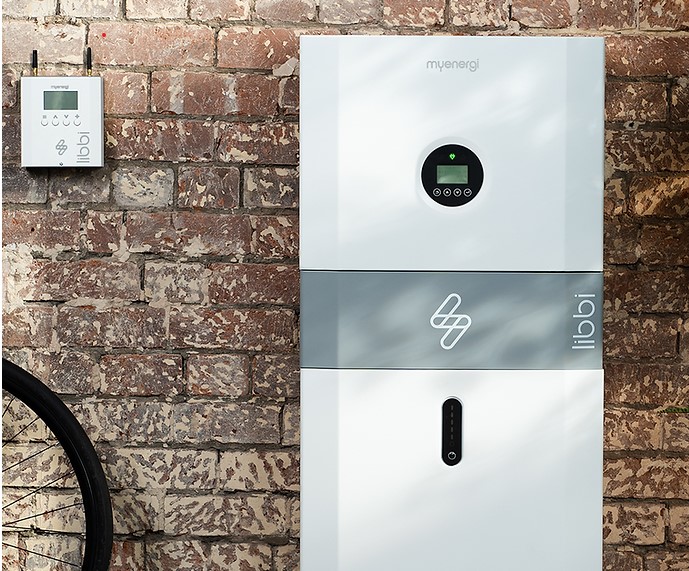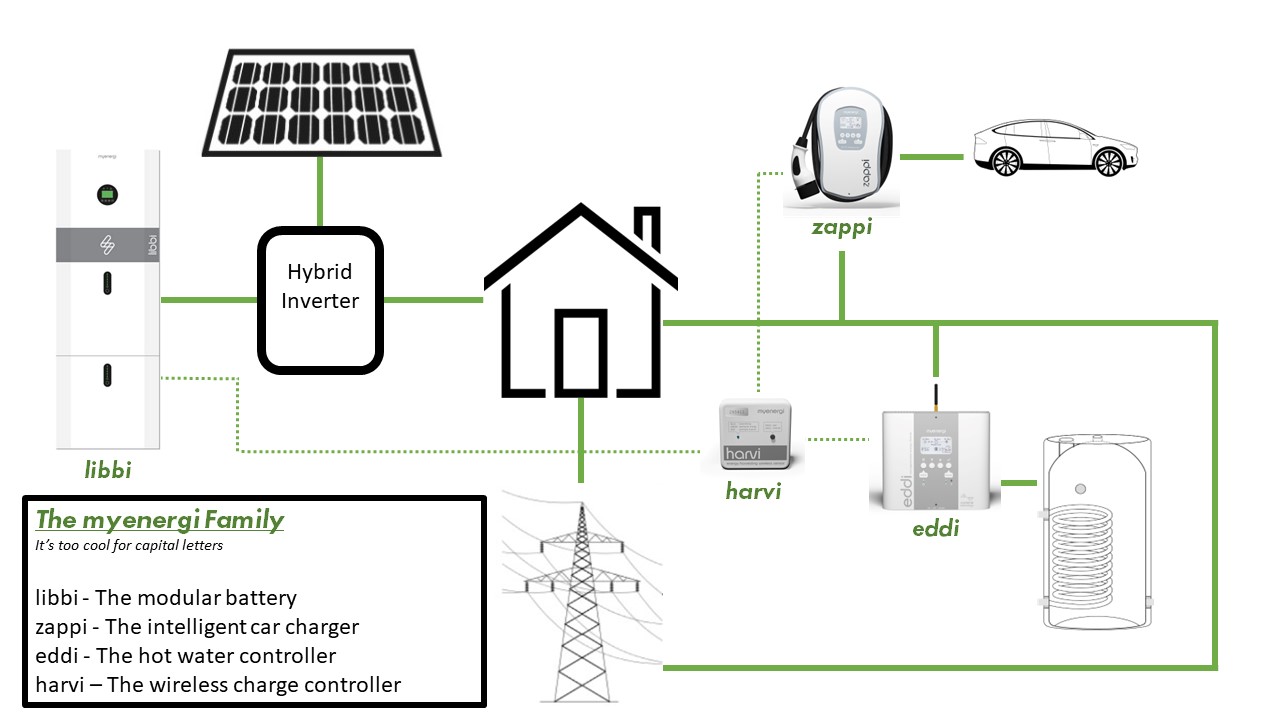
MyEnergi focuses on creating products to help homeowners make the most of their solar, the main ones to date being the Eddi hot water diverter, and Zappi car charger. Many of our customers have installed these alongside solar PV, because they will automatically turn the hot water immersion / car charger on and off to take advantage of excess solar.
In January 2023, MyEnergi is launching the 'libbi' battery storage system; thus the main suite of MyEnergi products will be as follows:
You can read about the other products on these links: Eddi hot water diverter, Zappi car charger.
The full product launch for MyEnergi's storage system - called libbi - is in January 2023, At the time of writing (December 2022), we are therefore missing one or two details.
However we do know that the system is available with:
In terms of location, the battery and inverter are IP65 rated and can go inside or out. The controller needs to be indoors,
The libbi is very flexible in that it can be used:
The libbi has two main functions:
Back-Up / Power cut functionality: Before buying any storage product, it is important to understand functionality in a power cut - does the storage work, and will the solar continue to work?
The libbi datasheet says that the system offers "Optional Blackout Back Up - Instant energy availability to a dedicated socket or lighting circuit in the event of a power cut. Additional installation costs will apply."
That's as much as we know as of December 2023, but we will update when we find out more.
Monitoring and Management: all MyEnergi products are managed through their APP.Sample pricing is as follows:
3.68kW power / 5kWh storage: ~ £6500 + VAT.
5kW power / 20kWh storage: ~ £14500 + VAT.
VAT is 0% if you purchase storage with one or more solar panels, and 20% otherwise.
The approximate installed cost of the libbi system runs from £788 + VAT per kWh.
With an expectation of 10,000 lifecycles (i.e. 10,000 storage slots of 1 kWh for each kWh of storage capacity), that equates to a cost of around 7.9 + VAT pence per kWh storage slot.
With electricity prices currently running at around 22.36 pence per kWh, it is clear that storing excess solar is cheaper than exporting excess to the grid when there is too much solar and then buying back later off the grid when you don't have enough electricity from the solar.
So a battery investment makes sense as long as there will be sufficient use of the battery overall (i.e. the storage slots purchased upfront actually get used). This comes down to proper sizing.
If you are in our installation area and request a quote from us, we will model the optimal battery based on the output of your solar system, usage and usage profile. You can also use our battery calculator).
Copyright © Spirit Energy 2025 · info@spiritenergy.co.uk · 0118 951 4490
Jobs and Careers
Interested in joining the Spirit team? Email jobs@spiritenergy.co.uk
Spirit House, 25 Albury Close, Reading, RG30 1BD
(Location formerly known as 44 Portman Road, Reading, RG30 1EA)
Spirit Energy is the trading name of Spirit Solar Ltd · UK Company Number 07138647
Although care is taken to ensure that the information on our website (www.spiritenergy.co.uk) and any guides, calculators or checklists provided by us, electronically or otherwise, are accurate and up-to-date, we cannot accept any responsibility for mistakes or omissions. We enter into no express or implied conditions, warranties, terms or representations regarding the quality, accuracy or completeness of the information. We exclude to the extent lawfully permitted all liability for loss or damage, whether direct, indirect or consequential arising out of your use of our website or any guides, calculators or checklists provided by us, or from any information or omission contained in our website or any guides, calculators or checklists provided by us.